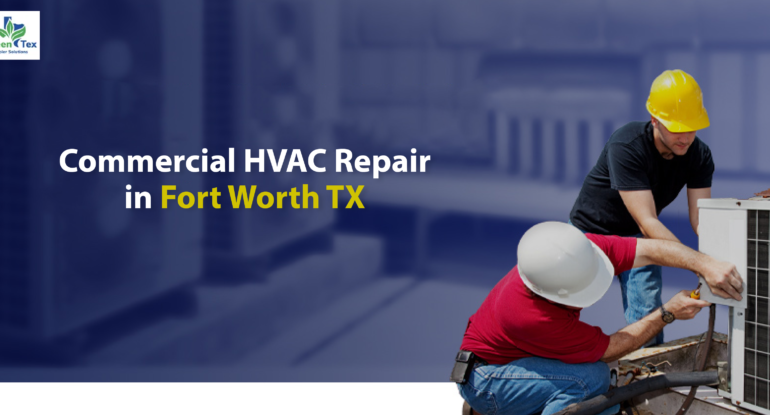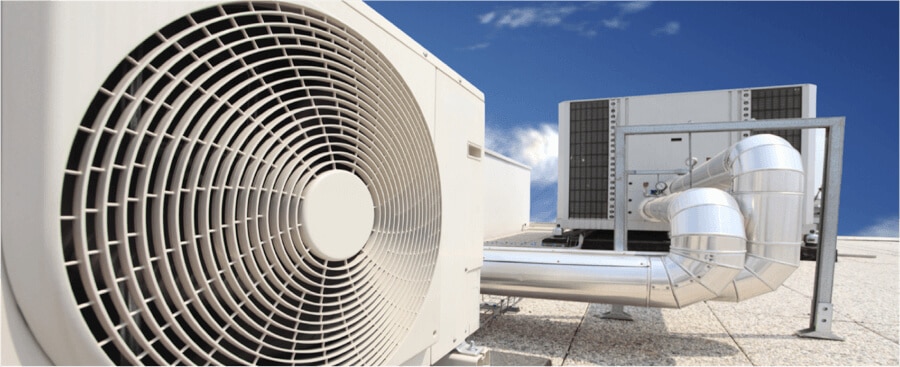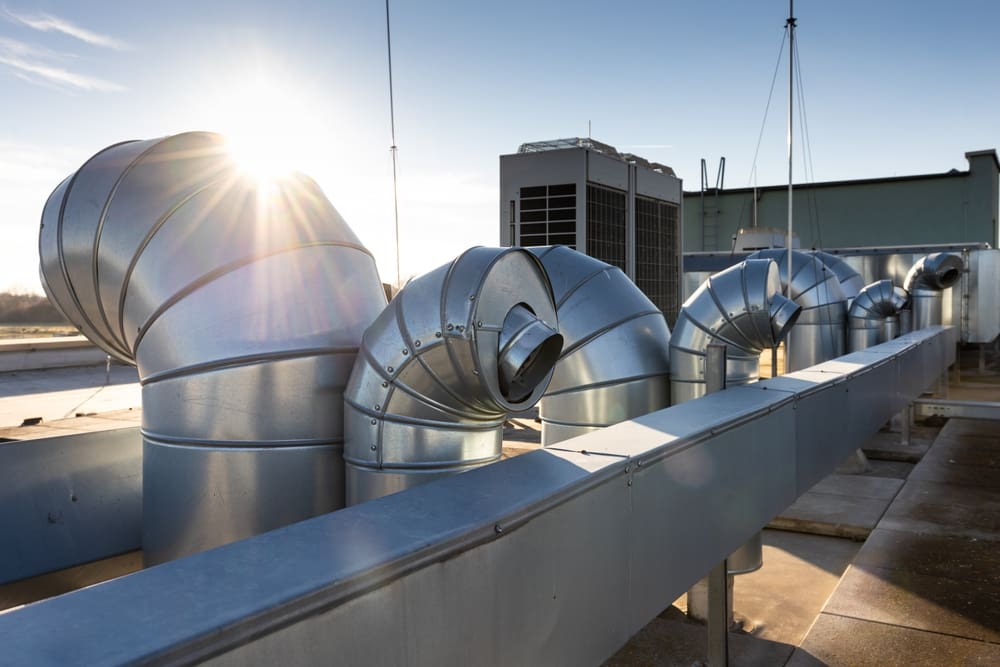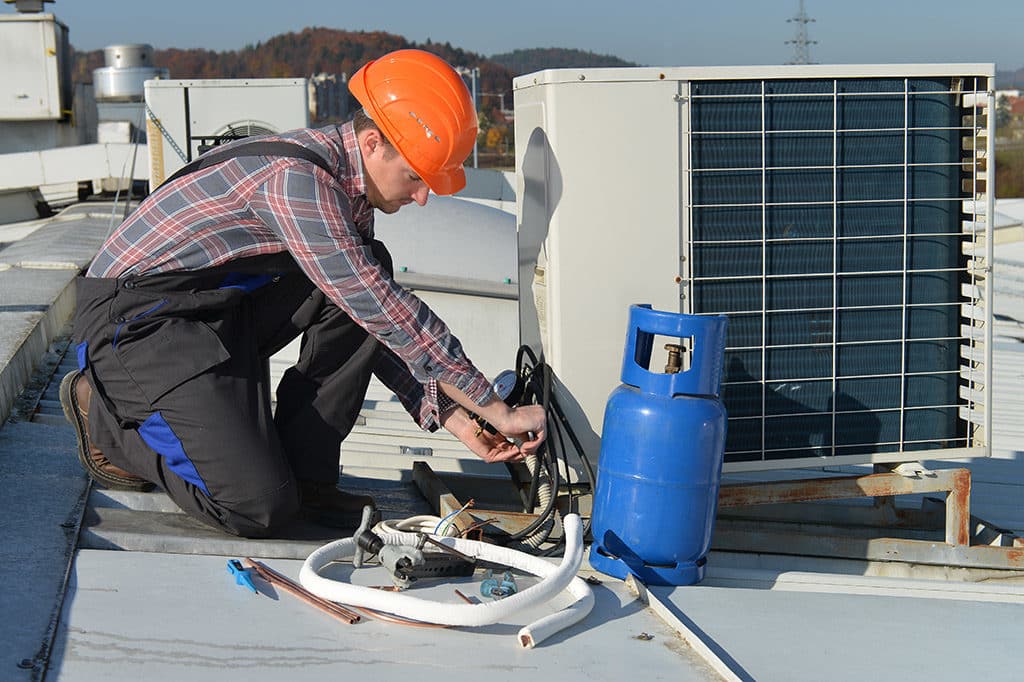Industrial Hvac Service In Fort Worth Tx

Dealing with a malfunctioning HVAC system in the scorching Fort Worth heat can be incredibly frustrating. Before you call a professional, however, there are several troubleshooting steps you can safely take to potentially resolve the issue yourself. This guide will walk you through common problems and basic DIY fixes, while emphasizing when it's time to call in the experts at an Industrial HVAC Service in Fort Worth TX.
Understanding Common HVAC Problems
Like any mechanical system, HVAC units can experience various issues. Understanding the common culprits can help you narrow down the problem and potentially avoid a costly service call. Here are a few frequent offenders:
- No Power: The unit isn't turning on at all.
- Weak Airflow: Air is blowing, but it's not strong enough to cool or heat the space effectively.
- No Cool/Heat: The unit is running, but it's not producing cool or warm air as expected.
- Strange Noises: Unusual sounds like banging, rattling, or whistling can indicate a mechanical problem.
- Constant Cycling: The unit turns on and off frequently, rather than running steadily.
- Water Leaks: Water pooling around the unit is a sign of a drainage issue.
Troubleshooting Steps: A DIY Guide
Before you begin any troubleshooting, remember to prioritize safety. Always turn off the power to the unit at the breaker box before inspecting any components. If you're uncomfortable with any step, or if you suspect a serious issue, contact a qualified HVAC technician.
1. Checking the Power Supply
A surprising number of HVAC problems are due to simple power issues. Here's how to check:
- Verify the Breaker: Go to your electrical panel (breaker box) and locate the breaker for your HVAC unit. Make sure it's in the "ON" position. If it's tripped (in the "OFF" or middle position), reset it by flipping it fully to the "OFF" position and then back to "ON". If it trips again immediately, there's likely a short circuit, and you'll need professional help.
- Check the Disconnect Switch: Most HVAC units have a disconnect switch located near the outdoor unit. Ensure this switch is in the "ON" position.
- Inspect the Wiring (Visually): (With the power OFF at the breaker), visually inspect the wiring around the disconnect switch and the unit itself for any signs of damage, such as frayed wires, loose connections, or burning smells. Do not touch any wires unless you are absolutely sure the power is off and you are qualified to do so. If you see any damage, call a professional.
- Check the Batteries in your Thermostat: A dead battery will disable the Thermostat. Changing the batteries will most likely solve the issues.
When to Call a Pro: If the breaker continues to trip, if you see any signs of electrical damage, or if you're uncomfortable working with electricity, contact a qualified electrician or HVAC technician.
2. Evaluating Thermostat Settings
Sometimes, the problem isn't the unit itself, but the thermostat settings. Here's what to check:
- Mode Selection: Ensure the thermostat is set to the correct mode (Heat, Cool, or Auto). Make sure you are not on Emergency Heat unless a professional tells you to use Emergency Heat.
- Temperature Setting: Verify that the temperature setting is appropriate for the season and your desired comfort level.
- Fan Setting: Check the fan setting. If it's set to "ON" instead of "AUTO," the fan will run continuously, even when the unit isn't heating or cooling.
- Programming: Review your thermostat's program schedule to ensure it's not inadvertently set to a different temperature or mode during certain times of the day.
- Thermostat Calibration: Some thermostats can become miscalibrated over time. Consult your thermostat's manual for instructions on how to recalibrate it.
When to Call a Pro: If your thermostat is malfunctioning, displaying errors, or not responding to inputs, you may need to replace it or have it professionally inspected.
3. Inspecting and Cleaning Air Filters
A dirty air filter is one of the most common causes of HVAC problems. It restricts airflow, forcing the unit to work harder and reducing its efficiency. Here's how to check and clean or replace your filter:
- Locate the Filter: Air filters are typically located in the return air vent, which is usually a large grille on a wall or ceiling. Some units may have the filter located inside the unit itself.
- Inspect the Filter: Remove the filter and hold it up to the light. If you can't see light through it, it's likely dirty and needs to be cleaned or replaced.
- Cleaning or Replacing:
- Disposable Filters: These filters cannot be cleaned and must be replaced with a new filter of the same size and type. Note the filter size before disposal.
- Washable Filters: Some filters are washable. Rinse the filter with water, allow it to dry completely, and then reinstall it.
- Regular Maintenance: Change or clean your air filter every 1-3 months, or more frequently if you have pets or allergies.
When to Call a Pro: If you're unsure about the type of filter you need, or if the filter housing is damaged, consult an HVAC technician.
4. Checking Outdoor Unit (Condenser)
The outdoor unit, or condenser, is responsible for releasing heat during the cooling process. If it's blocked or dirty, it can't function effectively. Here's what to check:
- Clear Debris: Remove any leaves, branches, grass clippings, or other debris that may be blocking the condenser fins. Use a soft brush or a garden hose to gently clean the fins. Avoid using a high-pressure washer, as it can damage the fins.
- Ensure Adequate Clearance: Make sure there's at least 2-3 feet of clear space around the unit to allow for proper airflow.
- Inspect for Damage: Visually inspect the unit for any signs of damage, such as bent fins, loose wires, or oil leaks.
When to Call a Pro: If the condenser fins are severely bent or damaged, if you see any signs of refrigerant leaks (oily residue), or if you're uncomfortable working around the unit, contact a qualified HVAC technician.
5. Addressing Drainage Issues
HVAC units produce condensation, which is typically drained away through a drain line. If the drain line is clogged, water can back up and cause leaks. Here's how to check and clear the drain line:
- Locate the Drain Line: The drain line is usually a PVC pipe that exits the indoor unit.
- Check for Clogs: Look for any signs of blockage, such as water dripping from the drain line or pooling around the unit.
- Clear the Clog:
- Wet/Dry Vacuum: Use a wet/dry vacuum to suck out any debris from the drain line.
- Vinegar Flush: Pour a cup of white vinegar down the drain line to help dissolve any buildup. Let it sit for 30 minutes, then flush with water.
When to Call a Pro: If you're unable to clear the clog, or if the drain line is damaged, contact an HVAC technician. They can use specialized tools to clear stubborn clogs and repair or replace the drain line.
6. Simple Part Replacements (With Caution)
Some minor HVAC issues can be resolved with simple part replacements. However, it's crucial to proceed with caution and only attempt these repairs if you're comfortable and have the necessary skills. Always turn off the power to the unit before attempting any electrical repairs.
- Capacitors: Capacitors help start and run the motors in your HVAC unit. If a capacitor fails, the unit may not start or may run inefficiently. Replacing a capacitor can be a relatively straightforward repair, but it involves working with electricity. If you are not comfortable working with electricity, do not attempt this repair.
- Safety First: Discharge the capacitor before handling it to avoid electrical shock. You can do this by using a screwdriver with an insulated handle to short across the terminals.
- Matching Specifications: When replacing a capacitor, make sure the new capacitor has the same voltage and capacitance (measured in microfarads) as the old one.
- Contactor: The contactor is an electrical relay that switches power to the compressor and fan motors. If the contactor fails, the unit may not turn on. Replacing a contactor is similar to replacing a capacitor and requires caution when working with electricity.
When to Call a Pro: Replacing capacitors or contactors involves working with electricity and should only be done by qualified individuals. If you're uncomfortable with this type of repair, or if you're unsure about the correct parts, contact a qualified HVAC technician. Incorrect installation or use of incorrect parts can damage your unit and create a safety hazard.
When to Call an Industrial HVAC Service in Fort Worth TX
While this guide provides basic troubleshooting steps, there are many situations where it's best to call a professional HVAC technician. Here are some instances where professional help is recommended:
- Refrigerant Leaks: Refrigerant is a hazardous substance, and only licensed technicians can handle it safely and legally.
- Compressor Problems: The compressor is the heart of your HVAC system, and repairs or replacements are complex and require specialized equipment.
- Electrical Issues: Any electrical problems beyond simple breaker resets or thermostat battery replacements should be handled by a qualified electrician or HVAC technician.
- Gas Leaks: If you suspect a gas leak, evacuate the area immediately and call your gas company and an HVAC technician.
- Major Mechanical Failures: If you hear loud banging, grinding, or other unusual noises, or if the unit is vibrating excessively, it's likely a sign of a major mechanical failure that requires professional attention.
- You're Uncomfortable: If you're uncomfortable with any of the troubleshooting steps outlined in this guide, or if you're unsure about what you're doing, it's always best to err on the side of caution and call a professional.
Trying to fix complex HVAC problems yourself can be dangerous and may even void your warranty. A qualified HVAC technician has the knowledge, experience, and tools to diagnose and repair your system safely and effectively. They can also ensure that your unit is running efficiently, saving you money on your energy bills in the long run.
Finding a Reputable Industrial HVAC Service in Fort Worth TX
When choosing an HVAC service provider, it's important to do your research and select a company with a proven track record of quality workmanship and customer satisfaction. Here are some tips for finding a reputable Industrial HVAC Service in Fort Worth TX:
- Check Online Reviews: Read online reviews on sites like Google, Yelp, and Angie's List to get an idea of other customers' experiences with the company.
- Verify Licensing and Insurance: Make sure the company is properly licensed and insured to operate in Texas.
- Ask for References: Ask the company for references from past customers.
- Get Multiple Quotes: Obtain quotes from several different companies before making a decision.
- Look for NATE Certification: NATE (North American Technician Excellence) is a certification program that ensures technicians have the knowledge and skills to perform HVAC repairs and installations correctly.
- Consider Experience: Choose a company that has been in business for a while and has experience working with the type of HVAC system you have.
By following these troubleshooting steps and knowing when to call a professional, you can keep your HVAC system running smoothly and efficiently, even during the hottest Fort Worth summers. Remember, safety is always the top priority, so don't hesitate to call a qualified Industrial HVAC Service in Fort Worth TX if you're unsure about anything.










